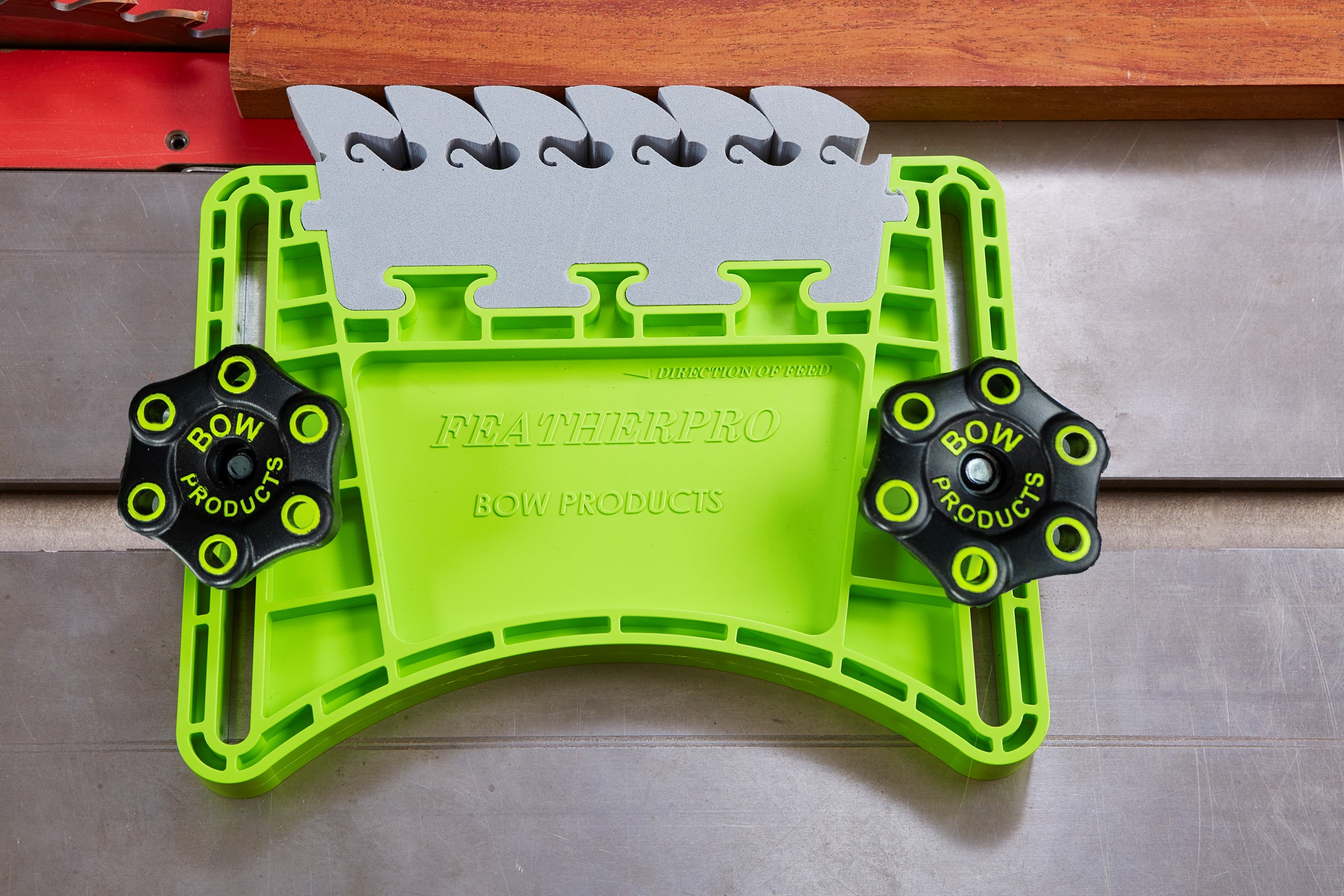If you’re new to woodworking, featherboards are mechanical holding devices designed to help hold stock against a tool's surface or fence. This pressure holds the material uniformly onto the cutting edge while it’s machined, reducing vibration and chatter.

Featherboards serve two main purposes:
Firstly, they hold the stock tight against the surface of a tool or fence while you run it through. A featherboard usually does this better than old mate woodworker, because it can apply constant and even pressure during the task and has no concern for changing hand positions. Uniformity of pressure means routing delicate edges, grooves and rabbeting operations a risk free, straight forward process.
Secondly, a featherboard can add pressure in a position closer to the action than human finger should ever dare venture. We all know that point, right there near the sharp bit where a little pressure would be most effective and reduce the chance of vibration greatly. However, if you use your hands and the stock kicks back, well that’s an hour or two in the emergency waiting room or worse.
Using a featherboard allows you to pin point where you need pressure during machining without risking a nasty injury. This means sawing super thin strips of timber on your table saw is now a safe, routine procedure. Likewise, dressing narrow strips of timber on your jointer is a task that may be completed without fear. And while it should be noted that featherboards are not a replacement for good practice or the standard safety gear such as the riving knife and anti-kickback pawls on your table saw, or the blade guard on your jointer, featherboards do provide significant kickback insurance to a point that it surprises us they do not also come standard with these types of machines.
It also surprises us, considering the significant operational and safety benefits they provide, how few featherboards you see in Australian woodworking shops. The Americans seem to be all over them, whereas here down under, we reckon we could count the number of featherboards we've seen in active use on one hand.
So maybe consider adding a few featherboards to your woodworking kit. Some people choose to make their own cut from a piece of straight grained, 75mm to 150mm wide piece of scrap. To make one, you simply crosscut the board at approximately 30 degrees and then make a series of stopped cuts in the direction of the grain roughly 3mm apart. The end result should be a series of flexible "fingers" running across angled end of the board.
Although Featherboards are not particularly hard to make, they do take time and homemade versions are usually less user friendly and lack the positioning and fixing features of manufactured featherboards. Rather than struggling to clamp your homemade featherboard into position, which can be especially difficult across the wide expanses of a table saw or router table top, high-quality featherboards feature a magnetic hold-down mechanism which completely side-steps the clamping problem.
The magnetic hold-down action, that can be switched on or off with the twist of a knob, allows you to clamp the featherboard firmly into practically any position, including vertically along your router or jointer fence. You can also get manufactured featherboards in a number of configurations that fit various machining forms and budgets.
Shop Featherboards Now!